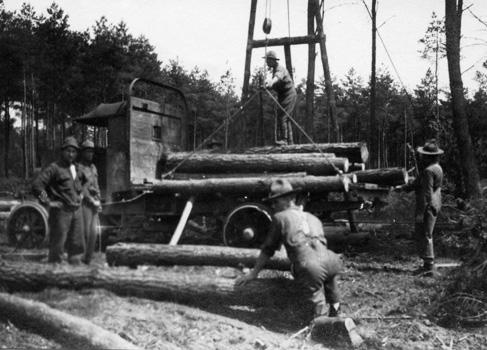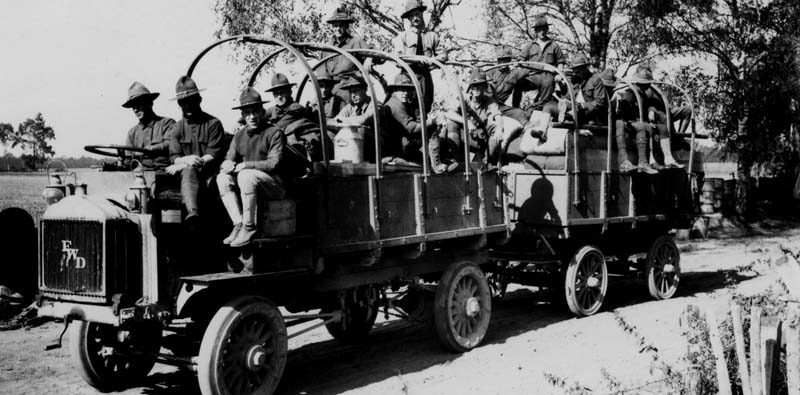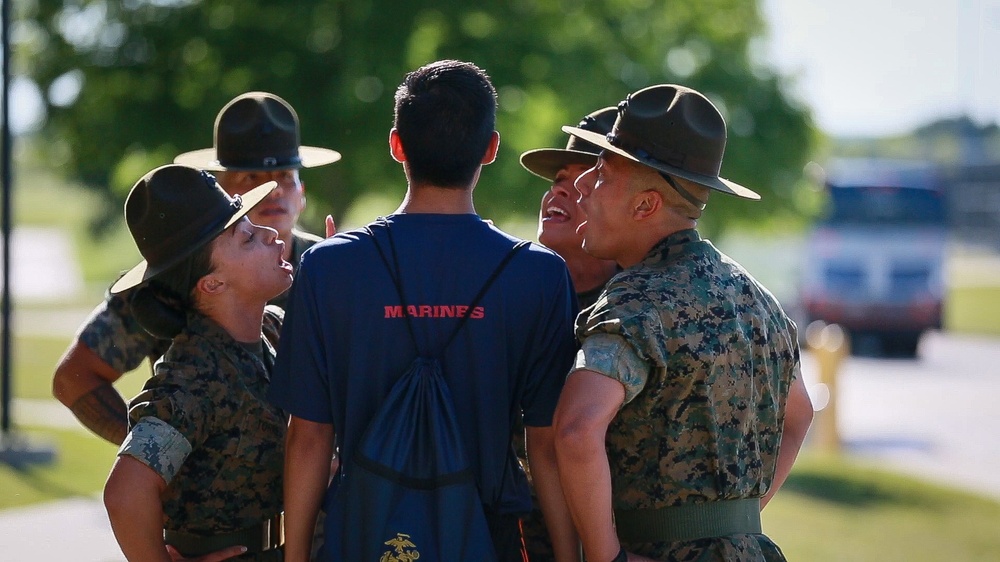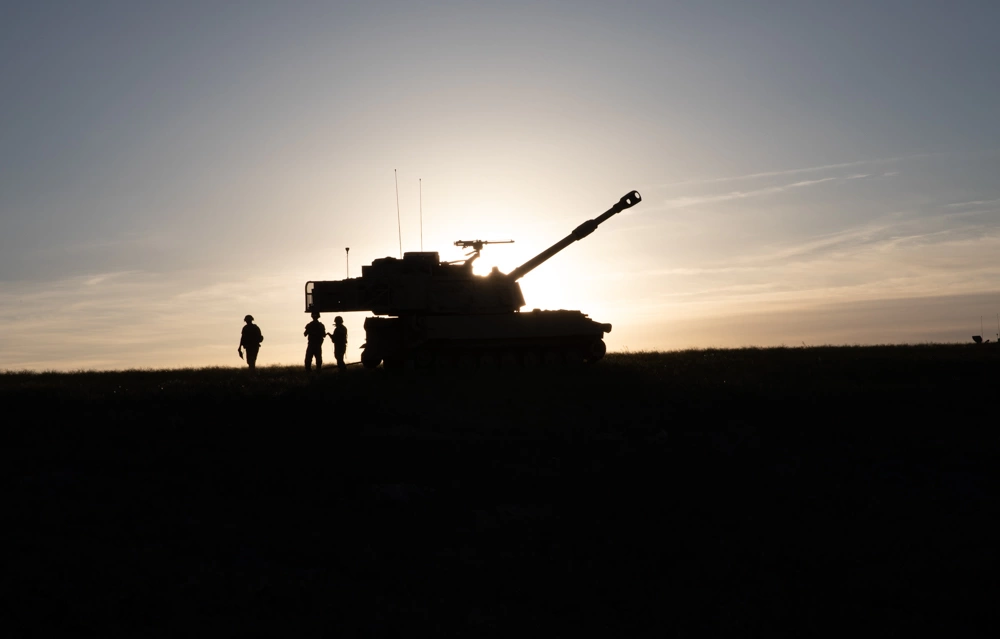And you have my axe: The American lumberjacks of World War I
- By Travis Pike
Share This Article

Tactics win battles, but logistics win wars. It’s tough to argue that the United States military doesn’t have the best logistics in the world – two world wars proved that Americans can get you what you need when you need it.
With Arbor Day right around the corner, it’s the perfect time to remember the Forestry Engineers of the American Expeditionary Force and their contributions to the WWI war effort. These lumberjacks played a vital role in the logistics of the war-fighting effort.
Even before entering the war, America had been sending lumber overseas, and the Spruce Production Division of the United States Army had worked tirelessly to provide wood to America’s allies. However, it took time to ship the wood to Europe, and the shipping routes were patrolled by German submarines looking to sink ships coming through.
So, at the behest of British and French forces, the U.S. Army raised two regiments of Forestry Engineers when it joined the war. And to simplify logistics and improve the time it took to get wood to the places it needed to be, the Army made Forestry Engineers a part of the Allied Expeditionary Force.
The 10th and 20th Forestry Engineers go to war and get to work
These men were all volunteers and came from many races. Recruitment was done through the United States Forest Service and the earliest battalions were filled with men from the Forestry Service and the civilian forestry industry.
Although the Army made sure to teach them basic soldiering skills that wasn’t their focus, instead, their preoccupation was turning trees into usable lumber.
Recruits for the 10th Engineers trained at American University in Washington DC. By September 10, the first of the 10th Engineers had set sail to Europe. On November 25, the American Lumberjacks began operating their first sawmill in France, and four days later, the first lumber was produced by an American unit. While these men weren’t on the front lines, a group from the 6th Engineer Battalion lost over 90 men when a German U-boat sunk their ship off the coast of Ireland.
Related: Did you know that the last trench gun survived until the Iraq War?

These men streamed into France and began setting up sawmills and lumber operations all over France. They were a regiment in name only and were seen as a manufacturing element.
The lumber provided by these allowed military forces to build hospitals and housing and to create something more than mud for the troops on the Western Front to sleep in. Wood was also needed to build wharves and railways, help reinforce trenches, and even transport supplies in crates. In that era, was needed for everything.
An estimated 15,000 men cut down trees, transported logs, and ran sawmills. Entire railways were built to facilitate transporting wood and lumber from the forests to the front.
American Forestry Engineers were supplying three armies with wood. From December 1 1917 to April 1 1919 American Forestry engineers created 212,528,000 feet of lumber. For comparison, British and French forces produced about 4,000,000 feet of lumber in the same period.
Until the end
The Armistice was signed on November 11, 1918, but American Forestry Engineers remained in France until the following July to help supply the country with wood to rebuild what was lost during the war. One lumberjack even remarked that when the armistice was signed, everyone got a day to celebrate except the lumberjacks and mill workers.
The American lumberjacks did their duty in both war and peace, helping an ally fight, win, and eventually recover from the devastation of World War I. Following the war, the 10th and 20th Forestry Engineer Reginemnts were deactivated, although the 20th was brought back as combat engineers when World War II kicked off.
Let’s take a moment to remember the lumberjacks of World War I, their contributions to the war effort, as well as their contributions to rebuilding an allied country.
Read more from Sandboxx News
- Tougher-than-nails Coast Guard rescue swimmers describe daring rescues
- How the Thompson SMG helped shape modern warfare
- Northrop Grumman’s Manta Ray submarine could be a boon for anti-submarine warfare
- Special Forces engineers are training to dig ditches and destroy tanks
- The replacement of the Marines’ problem-ridden AAVs arrives
Related Posts
Sandboxx News Merch
-

‘AirPower’ Classic Hoodie
$46.00 – $48.00 Select options This product has multiple variants. The options may be chosen on the product page -

‘Sandboxx News’ Trucker Cap
$27.00 Select options This product has multiple variants. The options may be chosen on the product page -

‘Kinetic Diplomacy’ Bumper Sticker (Black)
$8.00 Add to cart

Travis Pike
Travis Pike is a former Marine Machine gunner who served with 2nd Bn 2nd Marines for 5 years. He deployed in 2009 to Afghanistan and again in 2011 with the 22nd MEU(SOC) during a record-setting 11 months at sea. He’s trained with the Romanian Army, the Spanish Marines, the Emirate Marines, and the Afghan National Army. He serves as an NRA certified pistol instructor and teaches concealed carry classes.
Related to: Military History

The Switchblade, loitering munitions, and the new terrifying face of warfare

5 ways to prepare and survive the Marine Corps boot camp

Barrett’s Squad Support Rifle System will make infantry squad deadlier

The unique world and uses of howitzers
Sandboxx News
-

‘Sandboxx News’ Trucker Cap
$27.00 Select options This product has multiple variants. The options may be chosen on the product page -

‘AirPower’ Classic Hoodie
$46.00 – $48.00 Select options This product has multiple variants. The options may be chosen on the product page -

‘AirPower’ Golf Rope Hat
$31.00 Select options This product has multiple variants. The options may be chosen on the product page -

‘Sandboxx News’ Dad Hat
$27.00 Select options This product has multiple variants. The options may be chosen on the product page
